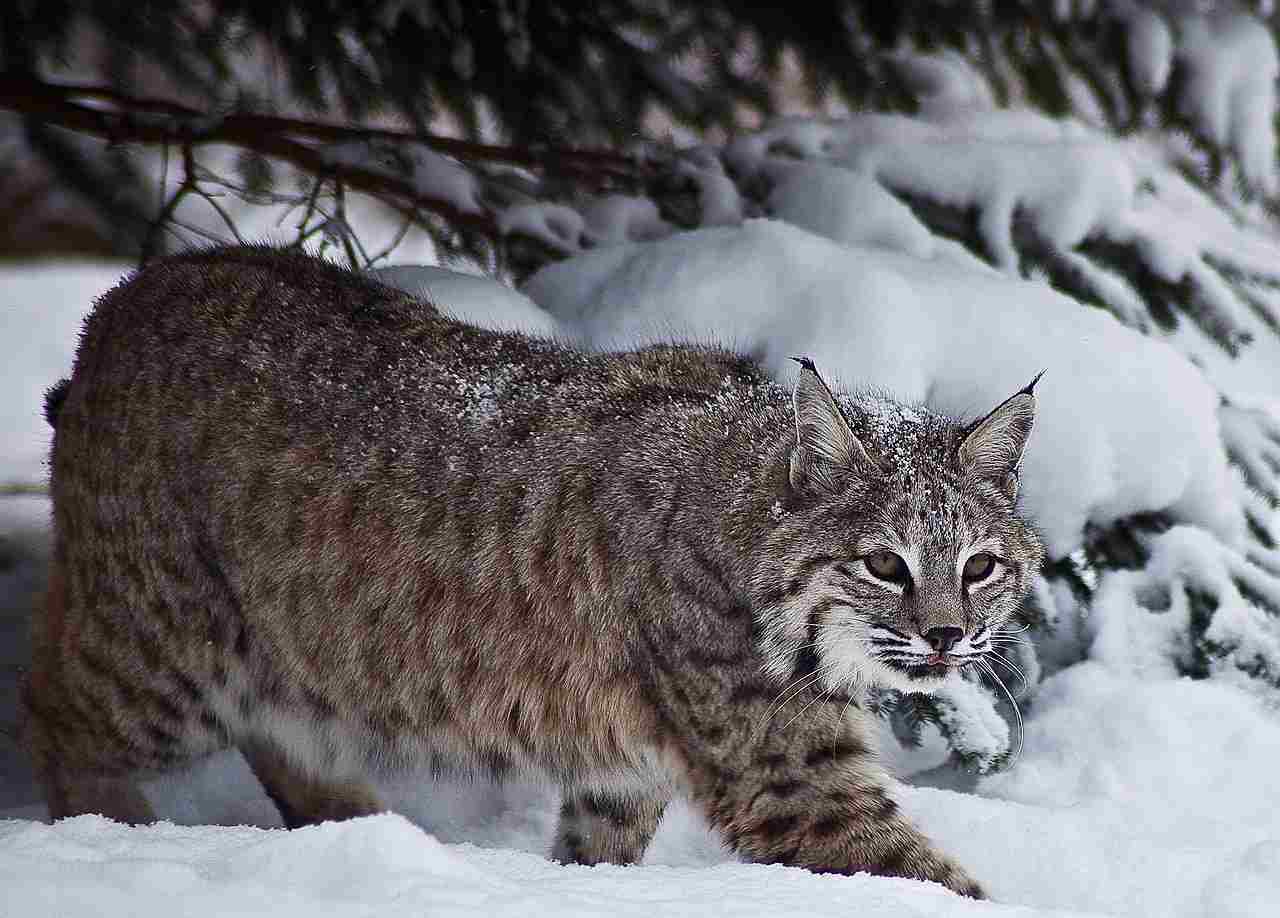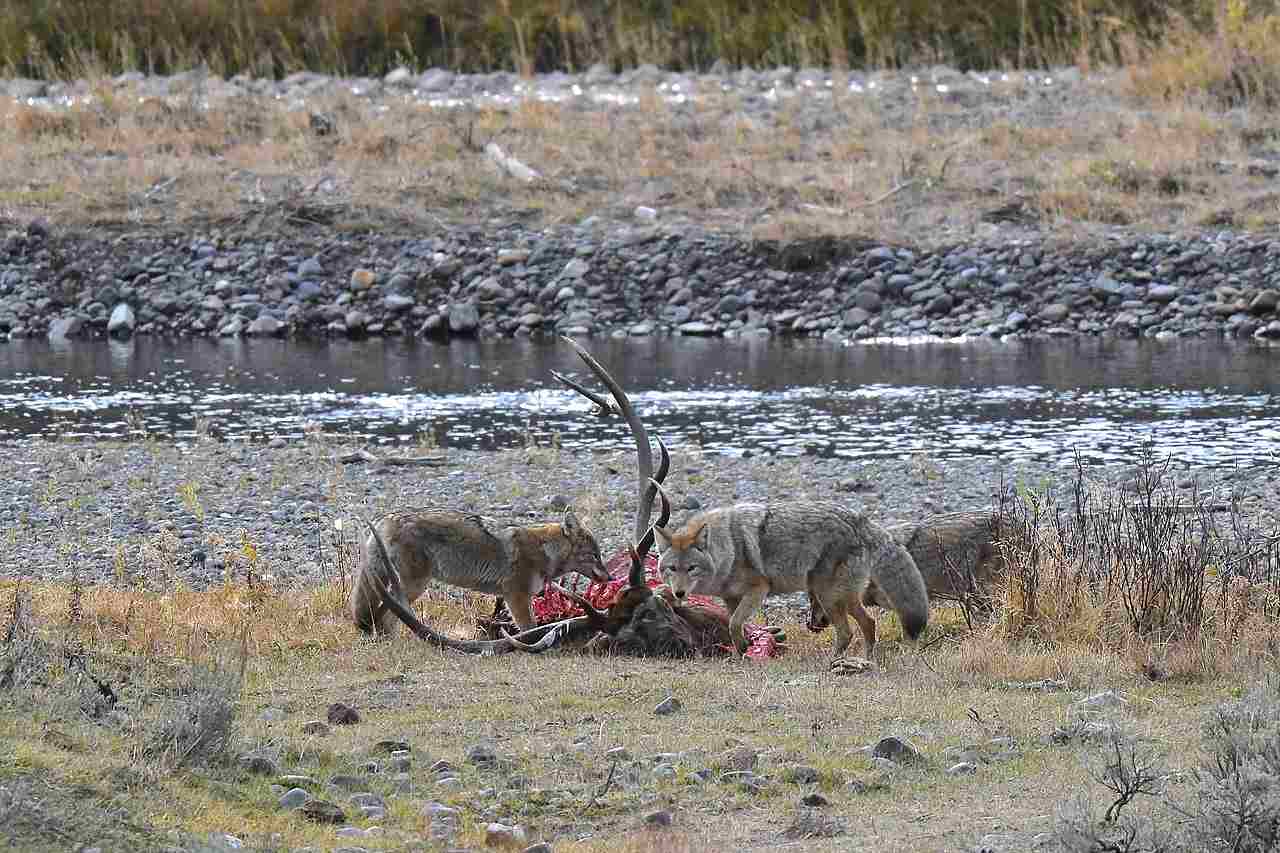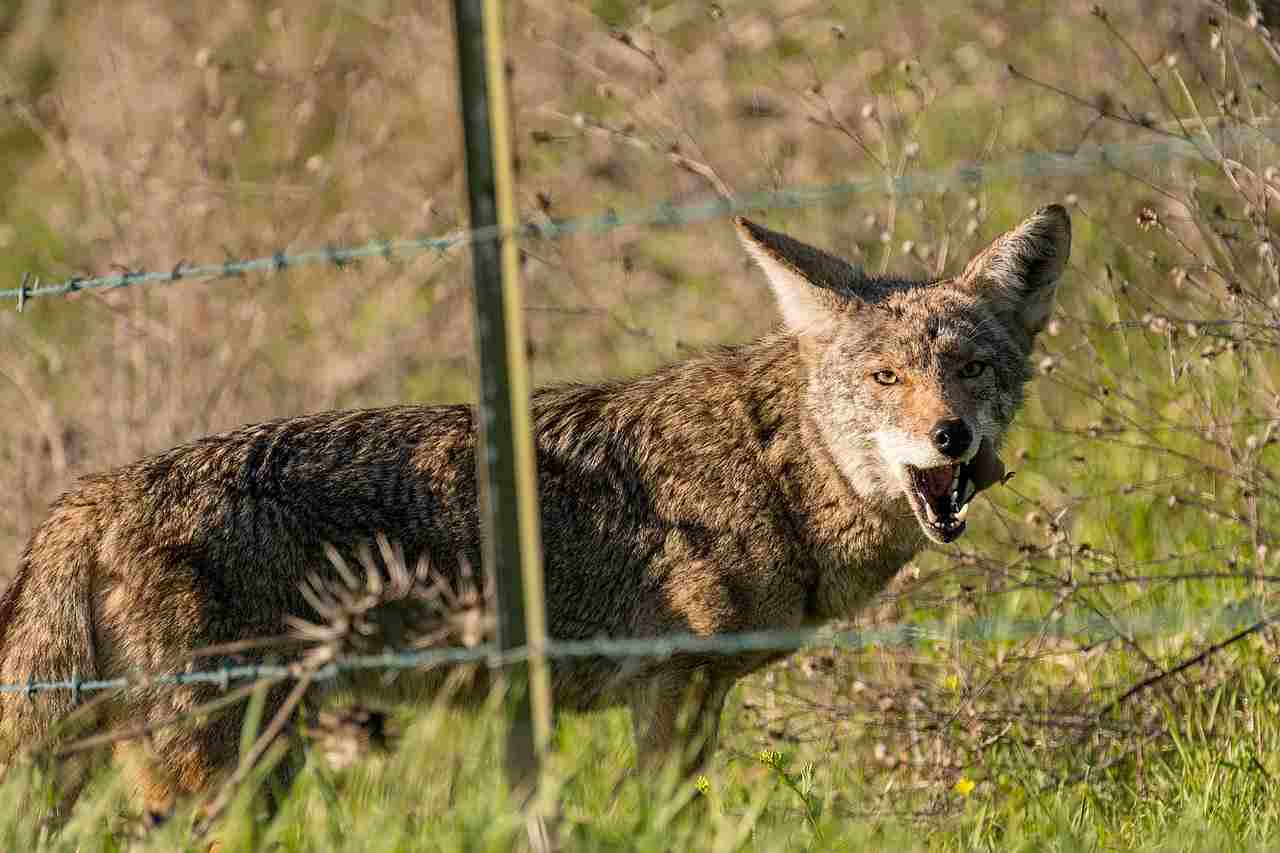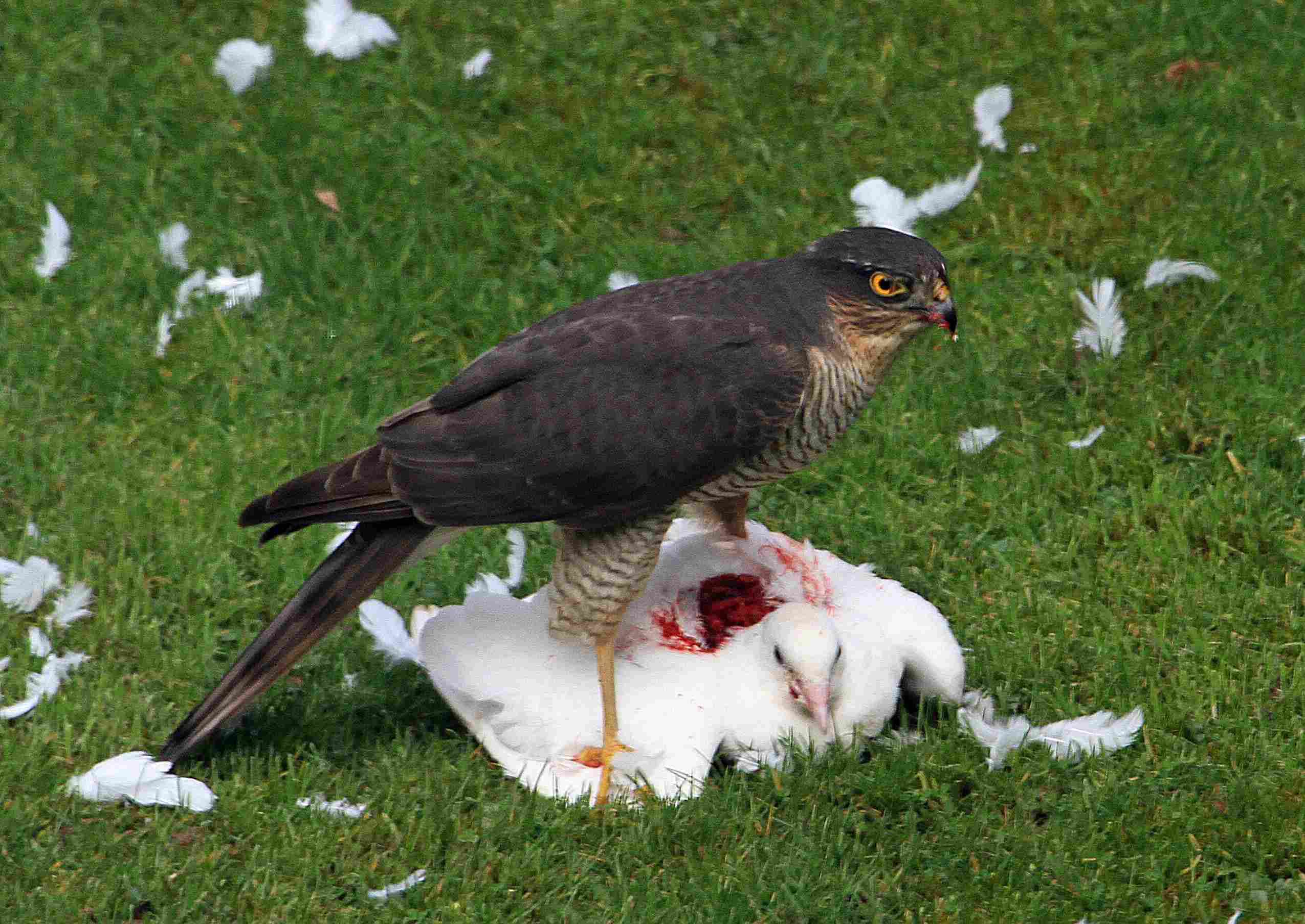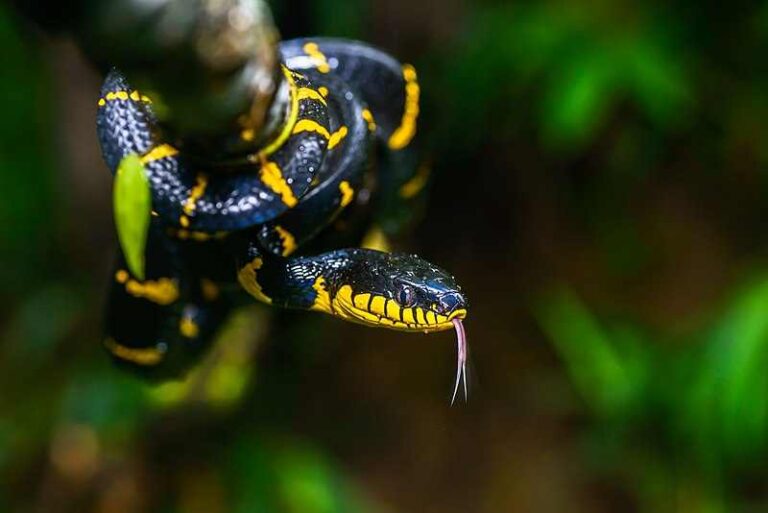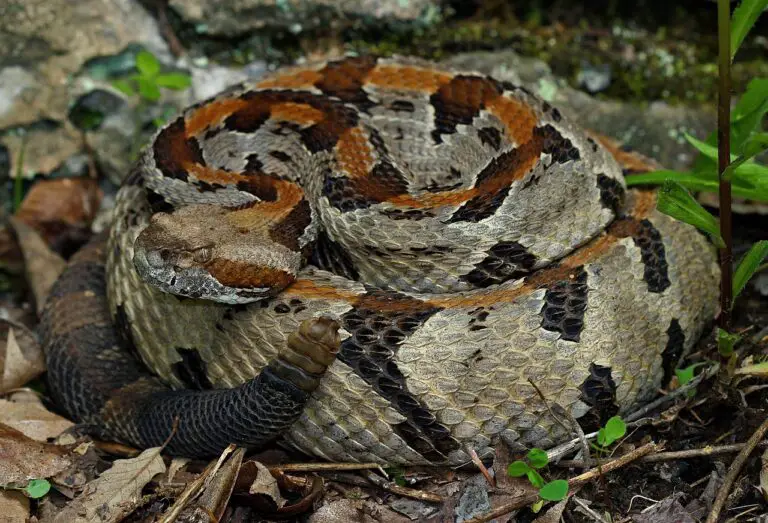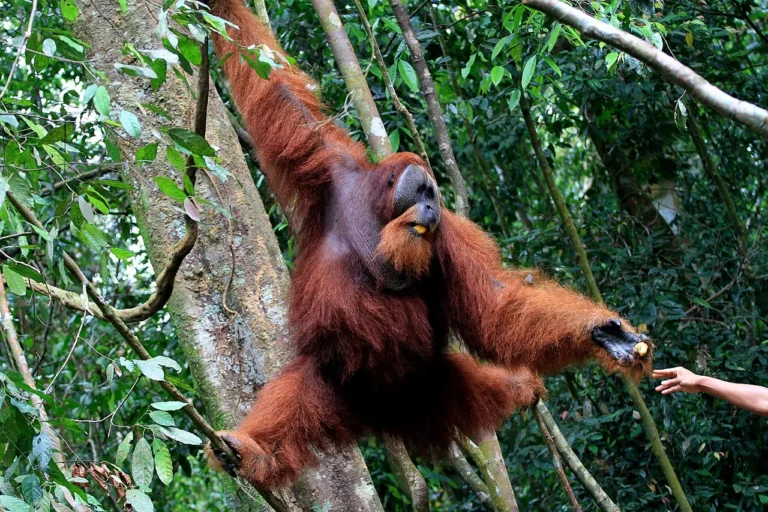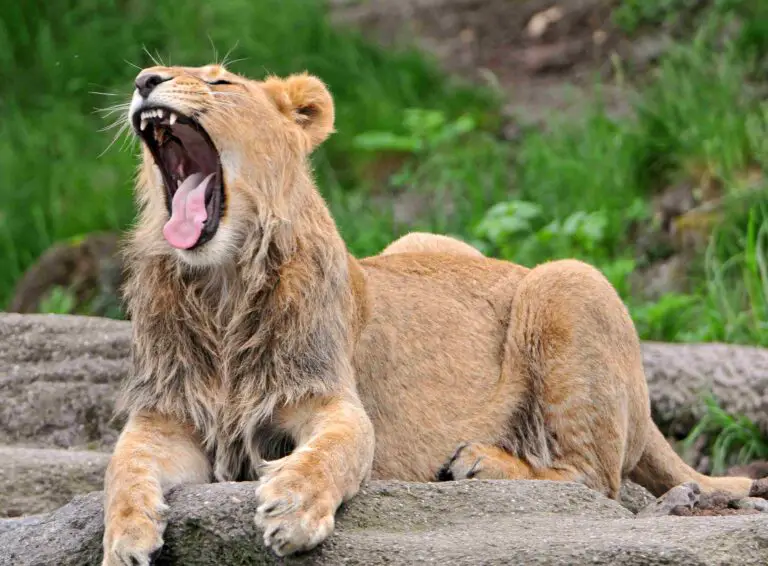23+ Dangerous Animals In Indiana And Their Characteristics
Examples of dangerous animals in Indiana are the Timber Rattlesnake, known for its potent hemotoxic venom, and the Copperhead, a venomous snake with a copper-colored head. Black Widow Spiders, with their neurotoxic venom, and Brown Recluse Spiders, which have venom that can cause severe tissue damage, also pose risks. Other dangerous animals include the Bald-Faced Hornet, known for its painful stings, and the Lone Star Tick, which can carry various diseases. Coyotes, Bobcats, and Red-Tailed Hawks are examples of predators that can pose risks to pets and livestock. These animals demonstrate the diverse array of potential hazards in Indiana’s wildlife.
1. Timber Rattlesnake
The Timber Rattlesnake (Crotalus horridus) is one of the most dangerous snakes found in Indiana. This venomous reptile is recognizable by its distinctive rattle at the end of its tail, used to warn predators and humans of its presence. Timber Rattlesnakes inhabit forested areas, often near rocky outcrops or dense underbrush, where they can camouflage effectively. Although generally reclusive and non-aggressive, they will strike if provoked or threatened. Their venom contains hemotoxins that can cause severe tissue damage, pain, and in rare cases, death if not treated promptly. Caution and respect for their natural habitat are crucial when hiking or exploring areas where these snakes might be present.
2. Copperhead
The Copperhead (Agkistrodon contortrix) is another venomous snake found in Indiana, recognized for its copper-colored head and hourglass-shaped bands along its body. It prefers forested environments with ample cover and often hides beneath logs, rocks, or leaf litter. Copperheads are generally less aggressive than other venomous snakes, but they will strike if disturbed or threatened. Their venom is hemotoxic, causing intense pain and potential tissue damage. While not typically lethal, a Copperhead bite requires prompt medical attention to minimize complications.
3. Eastern Massasauga
The Eastern Massasauga (Sistrurus catenatus) is a small but venomous rattlesnake native to Indiana’s wetlands and prairies. It has a distinctive rattle at the end of its tail and is usually gray or light brown with darker blotches along its body. Despite its small size, the Eastern Massasauga’s venom is potent, causing localized swelling, pain, and tissue damage. Although it’s reclusive and prefers to avoid human contact, it will strike if threatened. This species is protected due to its declining population, so caution is advised when exploring its habitats.
4. Black Widow Spider
The Black Widow Spider (Latrodectus mactans) is one of Indiana’s most notorious arachnids, easily recognized by its shiny black body and red hourglass marking on the abdomen. It typically resides in dark, undisturbed areas such as woodpiles, basements, or sheds. The Black Widow’s venom contains neurotoxins that can cause severe muscle pain, cramps, and other neurological symptoms. Although bites are rare, they require immediate medical attention, especially for children and the elderly, as their effects can be more severe in these groups.
5. Brown Recluse Spider
The Brown Recluse Spider (Loxosceles reclusa) is another venomous spider found in Indiana, known for its violin-shaped marking on the cephalothorax. It prefers dark, undisturbed areas like closets, attics, or under furniture. The Brown Recluse’s venom is necrotic, leading to severe tissue damage and, in some cases, extensive ulceration. Although bites are rare, they can result in significant medical complications if not treated promptly. It’s important to exercise caution when reaching into dark or hidden spaces where these spiders might reside.
6. Bald-Faced Hornet

The Bald-Faced Hornet (Dolichovespula maculata) is a large and aggressive hornet commonly found in Indiana. It has a distinctive black-and-white coloration and builds large, paper-like nests in trees or under eaves. These hornets are highly protective of their nests and will attack in swarms if they perceive a threat. Their stings are painful and can cause severe allergic reactions in some individuals, requiring immediate medical attention. Because of their aggressive behavior, caution is advised when encountering these hornets, especially near their nests.
7. Yellow Jacket
The Yellow Jacket (Vespula spp.) is a small but aggressive wasp commonly found in Indiana. Recognizable by its yellow and black stripes, the Yellow Jacket builds nests in the ground, trees, or structures. They are social insects that defend their nests vigorously, often attacking in swarms when threatened. Their stings are painful and can lead to severe allergic reactions in some people. Because they are attracted to food and sugary drinks, they are frequent visitors to picnics and outdoor events, making them a potential hazard.
8. European Hornet
The European Hornet (Vespa crabro) is a large and imposing hornet species that has established itself in Indiana. Unlike other hornets, it can be active at night and is attracted to light sources. European Hornets build large nests in hollow trees or buildings, and their stings can be extremely painful. They are generally less aggressive than other hornets, but they will defend their nests vigorously if disturbed. Their large size and tendency to nest in structures can make them a nuisance, and their sting can cause severe reactions in sensitive individuals.
9. Wasps
Wasps are a diverse group of insects found throughout Indiana, known for their slender bodies and narrow waists. They build a variety of nests, from paper-like structures in trees to underground burrows. Wasps are generally beneficial as they control pest populations, but they can become aggressive when their nests are disturbed. Their stings are painful and can cause severe reactions, including anaphylaxis, in some people. It’s crucial to exercise caution around wasp nests and to seek professional help for their removal.
10. Deer Tick (carries Lyme disease)
The Deer Tick (Ixodes scapularis), also known as the Black-Legged Tick, is a small arachnid found in Indiana that carries Lyme disease, a serious bacterial infection. These ticks inhabit wooded and grassy areas, often clinging to vegetation until they can attach to a passing host, such as a human or animal. Lyme disease can cause a range of symptoms, from a characteristic bullseye rash to more severe neurological and cardiac issues if left untreated. To minimize the risk of tick bites, wear protective clothing and use tick repellents when outdoors, and check for ticks promptly after outdoor activities.
11. Black-Legged Tick (carries Lyme disease)
The Black-Legged Tick (Ixodes scapularis) is the same as the Deer Tick, commonly found in Indiana and known for transmitting Lyme disease. This tiny tick can be challenging to spot, especially in its nymph stage. It prefers humid, wooded areas and is active from early spring through late fall. Black-Legged Ticks are particularly concerning because of their role in spreading Lyme disease, which can cause severe health issues if not treated early. To protect against bites, take precautions such as wearing long sleeves, tucking pants into socks, and using tick repellents. Regular tick checks are crucial after outdoor activities.
12. Lone Star Tick (carries various diseases)
The Lone Star Tick (Amblyomma americanum) is a common tick in Indiana known for its distinctive white “lone star” spot on the back of females. It can carry various diseases, including ehrlichiosis, tularemia, and the potential for a meat allergy called alpha-gal syndrome. This tick thrives in wooded and grassy areas, attaching to humans and animals. To avoid bites and potential disease transmission, wear protective clothing and use tick repellents when outdoors, especially in tick-prone regions. Checking for ticks after outdoor activities is vital for early detection.
13. Coyote
The Coyote (Canis latrans) is a highly adaptable predator found throughout Indiana, inhabiting rural and urban areas. While generally shy and elusive, they can become bold and aggressive if they associate humans with food or feel threatened. Coyotes can pose a risk to small pets and livestock. To minimize encounters, avoid leaving food sources outside and supervise pets in open areas. If you encounter a coyote, make loud noises to scare it away and maintain a safe distance.
14. Bobcat
The Bobcat (Lynx rufus) is a medium-sized wildcat found in Indiana’s forests and grasslands. It has distinctive tufted ears and a short “bobbed” tail. Bobcats are typically elusive and avoid human contact, but they are powerful predators capable of harming small pets and livestock. While attacks on humans are rare, caution is advised when exploring areas where bobcats are known to reside. If you encounter a bobcat, do not approach it, and back away slowly without turning your back.
15. Gray Fox
The Gray Fox (Urocyon cinereoargenteus) is a common predator in Indiana, identifiable by its gray coat and bushy tail. It prefers forested habitats but is also found in suburban areas. Gray Foxes are generally shy and avoid humans, but they can pose a risk to small pets if they venture into residential areas. They are excellent climbers and can even climb trees to escape threats. To prevent unwanted encounters, secure trash and pet food, and avoid feeding wildlife.
16. Red Fox
The Red Fox (Vulpes vulpes) is another common predator in Indiana, easily recognized by its bright red fur and bushy tail. Like the Gray Fox, it prefers wooded areas but is also found near human settlements. Red Foxes are generally non-aggressive, but they may pose a risk to small pets and livestock. To reduce encounters, keep trash secure and do not leave pet food outside. If you encounter a Red Fox, do not approach it, and give it space to escape.
17. Striped Skunk
The Striped Skunk (Mephitis mephitis) is a common mammal in Indiana, identifiable by its black fur and distinctive white stripes along its back. Skunks are generally non-aggressive but can spray a foul-smelling liquid when threatened, which can cause temporary blindness and intense discomfort. They are nocturnal and often forage for food in suburban areas. To avoid skunk encounters, secure trash and avoid startling them at night. If sprayed, seek appropriate treatment to remove the odor from skin and clothing.
18. Opossum
The Opossum (Didelphis virginiana) is a nocturnal marsupial found throughout Indiana. It has a rat-like tail and a pouch for carrying its young. Opossums are generally harmless and play a beneficial role in controlling insect and small rodent populations. However, they can carry diseases such as rabies and may become aggressive if cornered. To avoid conflicts, keep trash secure and do not leave pet food outside. If you encounter an opossum, do not approach or corner it.
19. Raccoon
The Raccoon (Procyon lotor) is a common mammal in Indiana, known for its distinctive black “mask” and ringed tail. Raccoons are intelligent and resourceful, often foraging for food in suburban areas. While they are generally not aggressive, they can carry diseases such as rabies and pose a risk to pets and property. To reduce raccoon encounters, secure trash and pet food, and avoid leaving food sources outside. If you encounter a raccoon, keep your distance and do not attempt to feed or touch it.
20. Snapping Turtle
The Snapping Turtle (Chelydra serpentina) is a large and aggressive turtle found in Indiana’s waterways. It has a powerful jaw capable of delivering a painful bite, and it can be dangerous if provoked. Snapping Turtles prefer slow-moving rivers, lakes, and ponds. While they are not typically aggressive toward humans, they can become aggressive if threatened or handled. If you encounter a Snapping Turtle, give it a wide berth and do not attempt to pick it up or disturb it.
21. Large-Mouth Bass (can bite)
The Large-Mouth Bass (Micropterus salmoides) is a popular game fish found in Indiana’s lakes and rivers. While not typically dangerous, it has a large mouth with sharp teeth that can deliver a painful bite if handled improperly. Anglers should exercise caution when removing hooks and handling these fish to avoid injury. To minimize the risk of bites, use appropriate tools when fishing and handle fish with care.
22. Muskellunge (can bite)
The Muskellunge (Esox masquinongy), or “muskie,” is a large predatory fish found in Indiana’s lakes and rivers. It has sharp teeth and a powerful jaw, capable of delivering a painful bite if mishandled. Muskellunge are popular among anglers but require careful handling due to their aggressive nature. When fishing for muskellunge, use appropriate tools to remove hooks and exercise caution when handling these large fish.
23. Red-Tailed Hawk
The Red-Tailed Hawk (Buteo jamaicensis) is a common bird of prey in Indiana, identifiable by its broad wings and red tail. While not generally dangerous to humans, it has sharp talons and a powerful beak, capable of causing injury if threatened or handled. Red-Tailed Hawks primarily prey on small mammals and birds but may pose a risk to small pets if they venture into suburban areas. To avoid conflict, supervise small pets outdoors and avoid disturbing nesting sites.
24. Great Horned Owl
The Great Horned Owl (Bubo virginianus) is a large and formidable bird of prey found in Indiana. It has distinctive “horns” or tufts on its head and large, sharp talons. Great Horned Owls are primarily nocturnal hunters, preying on small mammals, birds, and reptiles. While they generally avoid humans, they can become aggressive if their nesting sites are disturbed or if they feel threatened. To minimize encounters, avoid disturbing owl nests and maintain a safe distance from these powerful birds.
| Animal | Description |
| Timber Rattlesnake |
Venomous snake with hemotoxins; generally reclusive but will strike if threatened.
|
| Copperhead |
Venomous snake with hemotoxic venom; prefers forested areas and may bite if disturbed.
|
| Eastern Massasauga |
Venomous rattlesnake found in wetlands; venom causes localized swelling and tissue damage.
|
| Black Widow Spider |
Venomous spider with neurotoxic venom; found in dark, undisturbed areas.
|
| Brown Recluse Spider |
Venomous spider with necrotic venom; prefers dark, hidden spaces.
|
| Bald-Faced Hornet |
Aggressive hornet with painful stings; protects large paper-like nests.
|
| Yellow Jacket |
Small aggressive wasp; painful stings and risk of allergic reactions.
|
| European Hornet |
Large hornet; painful stings and can be active at night.
|
| Wasps |
Diverse group of stinging insects; can be aggressive and pose a risk of allergic reactions.
|
| Deer Tick |
Tick that carries Lyme disease; commonly found in wooded and grassy areas.
|
| Black-Legged Tick |
Same as Deer Tick; carries Lyme disease and other infections.
|
| Lone Star Tick |
Tick with a distinctive white spot; carries various diseases and can cause a meat allergy.
|
| Coyote |
Adaptable predator; can pose a risk to small pets and livestock.
|
| Bobcat |
Medium-sized wildcat; generally elusive but can harm small pets and livestock.
|
| Gray Fox |
Common predator; shy but can pose a risk to small pets and livestock.
|
| Red Fox |
Recognizable by its red fur; generally non-aggressive but can threaten small pets.
|
| Striped Skunk |
Sprays foul-smelling liquid when threatened; can cause temporary blindness and discomfort.
|
| Opossum |
Generally harmless marsupial; can carry diseases and may become aggressive if cornered.
|
| Raccoon |
Intelligent mammal; can carry diseases and pose a risk to pets and property.
|
| Snapping Turtle |
Large and aggressive turtle; has a powerful jaw that can deliver a painful bite.
|
| Large-Mouth Bass |
Popular game fish; large mouth with sharp teeth can cause a painful bite.
|
| Muskellunge |
Large predatory fish with a powerful jaw; can deliver a painful bite if mishandled.
|
| Red-Tailed Hawk |
Common bird of prey; sharp talons and beak can cause injury if threatened.
|
| Great Horned Owl |
Large nocturnal bird of prey; can become aggressive if disturbed or threatened.
|
